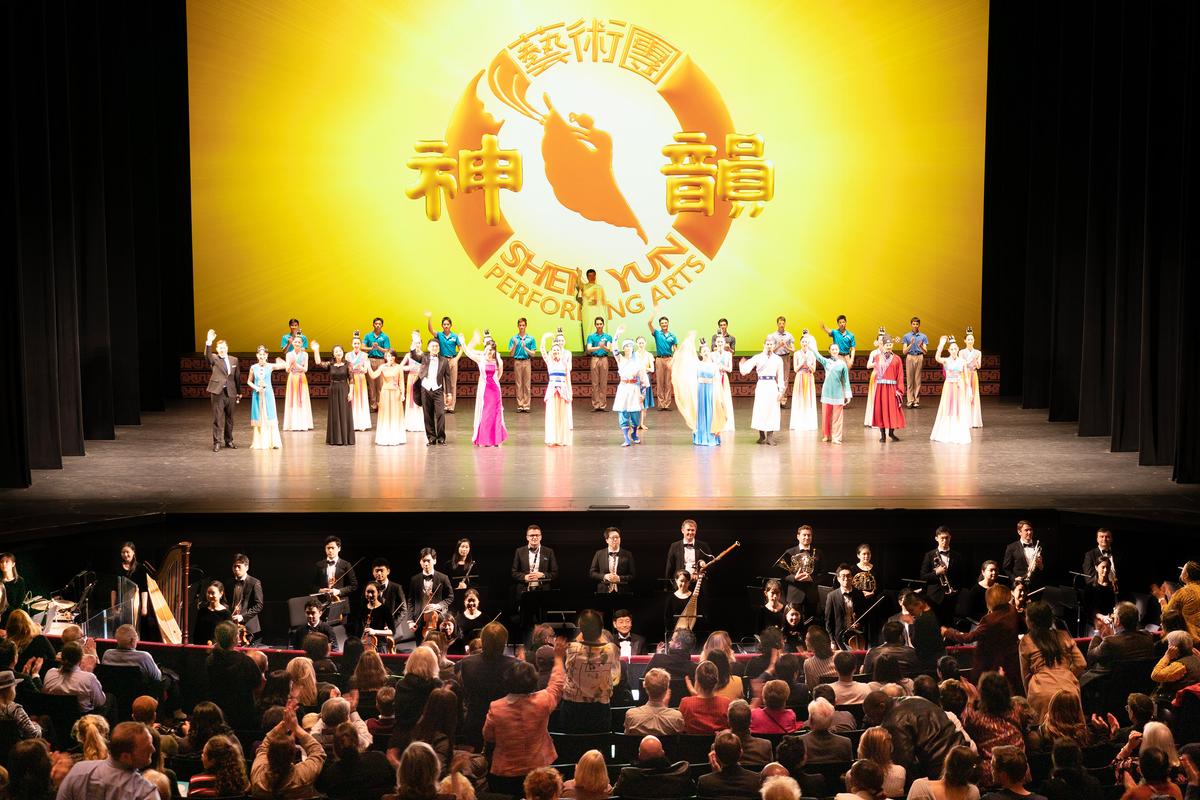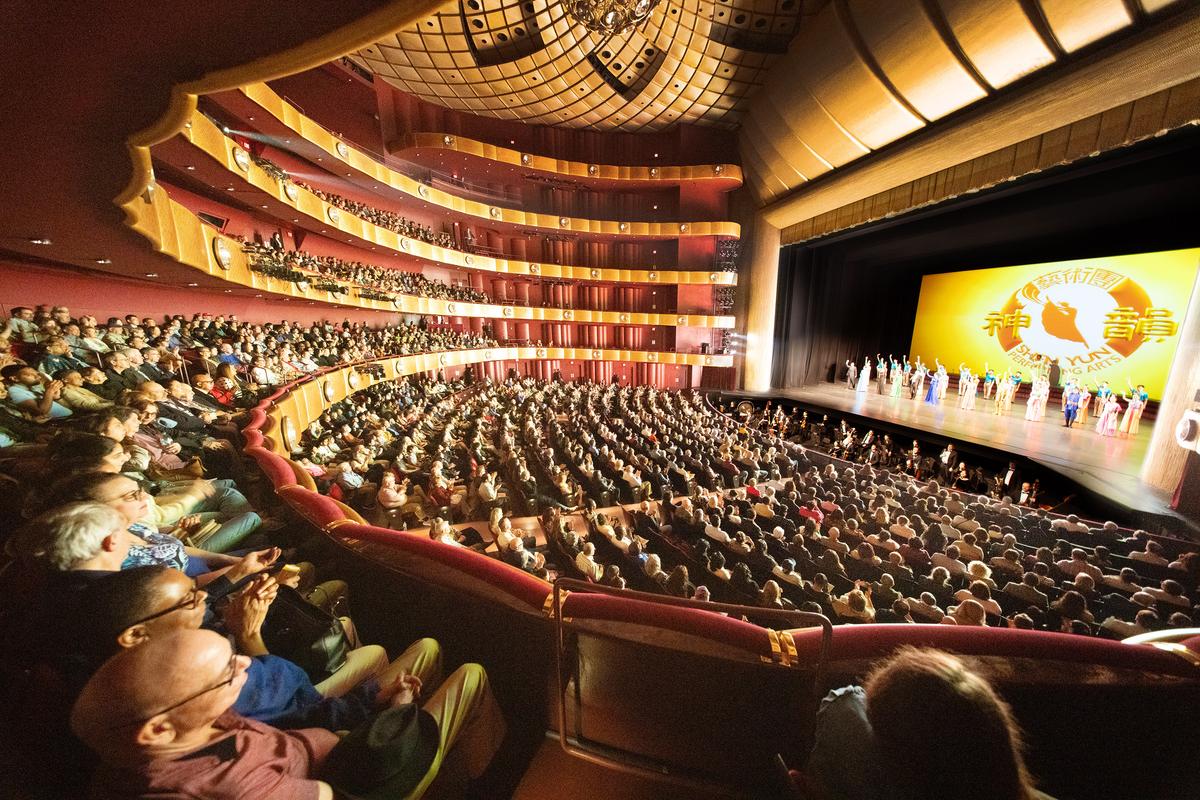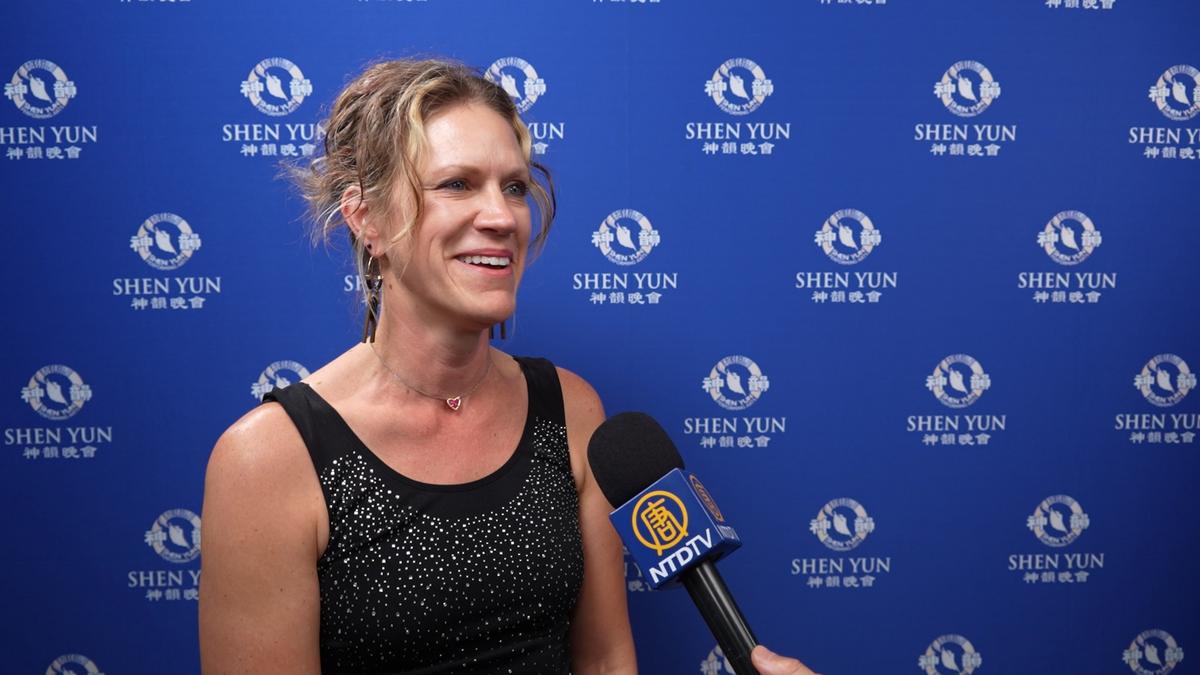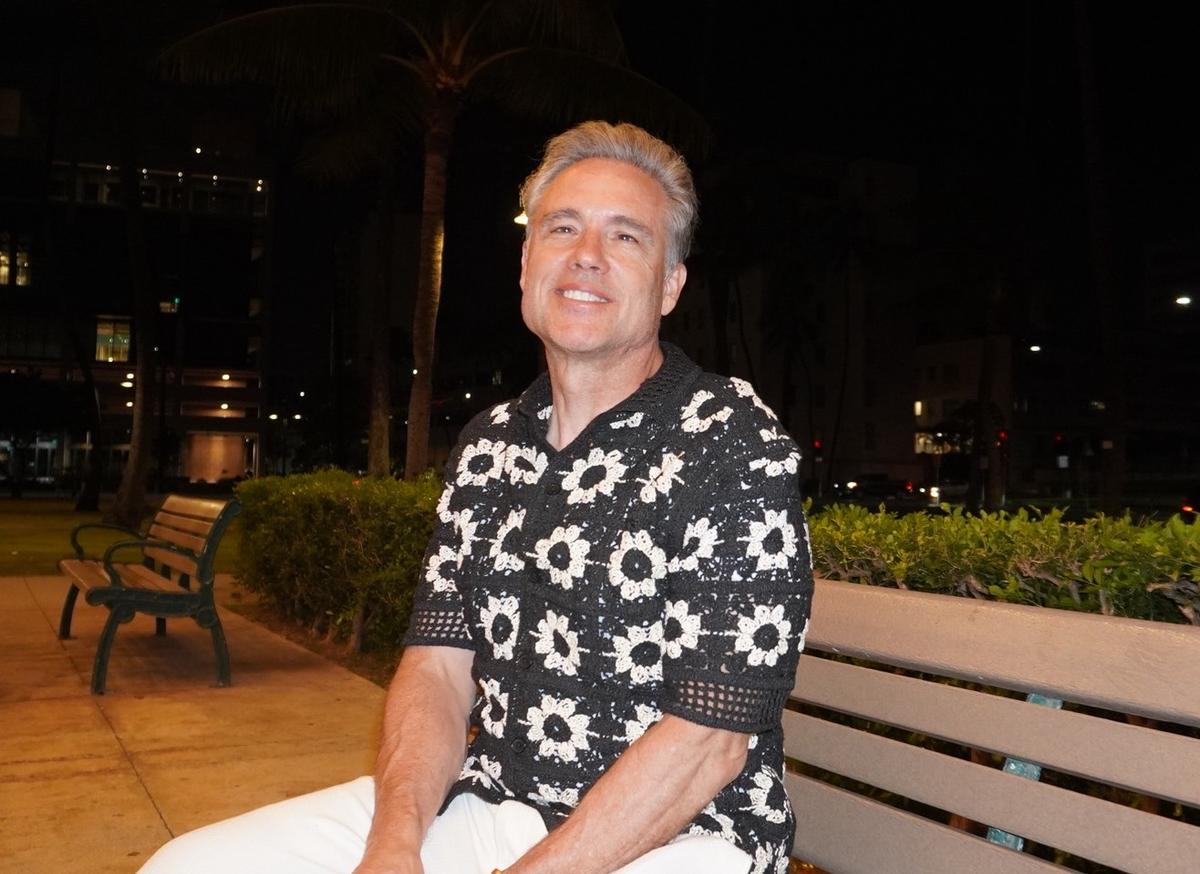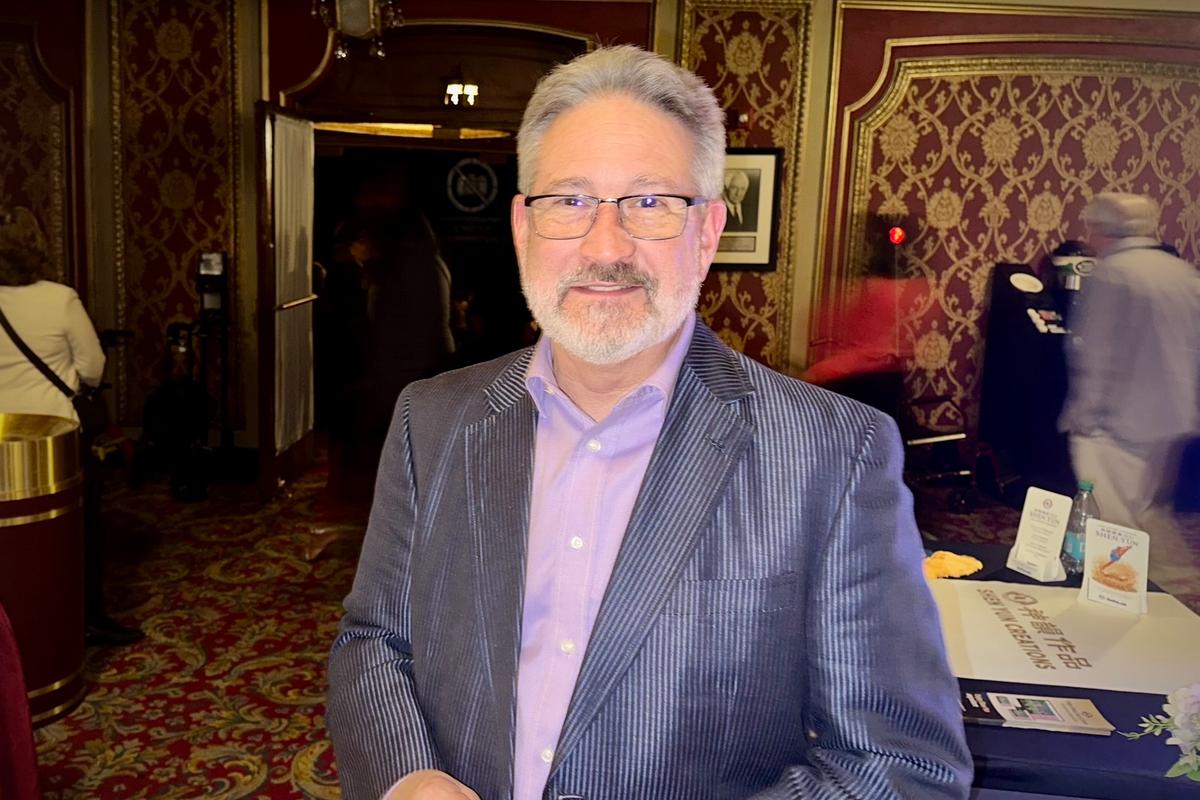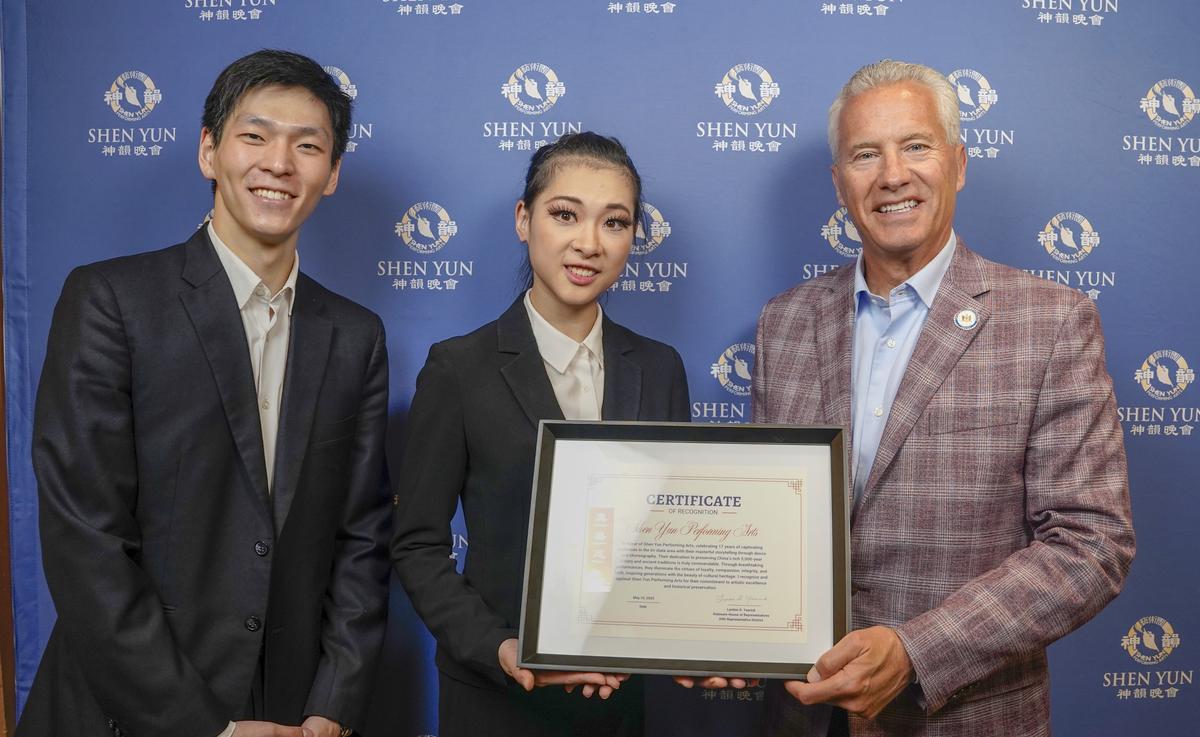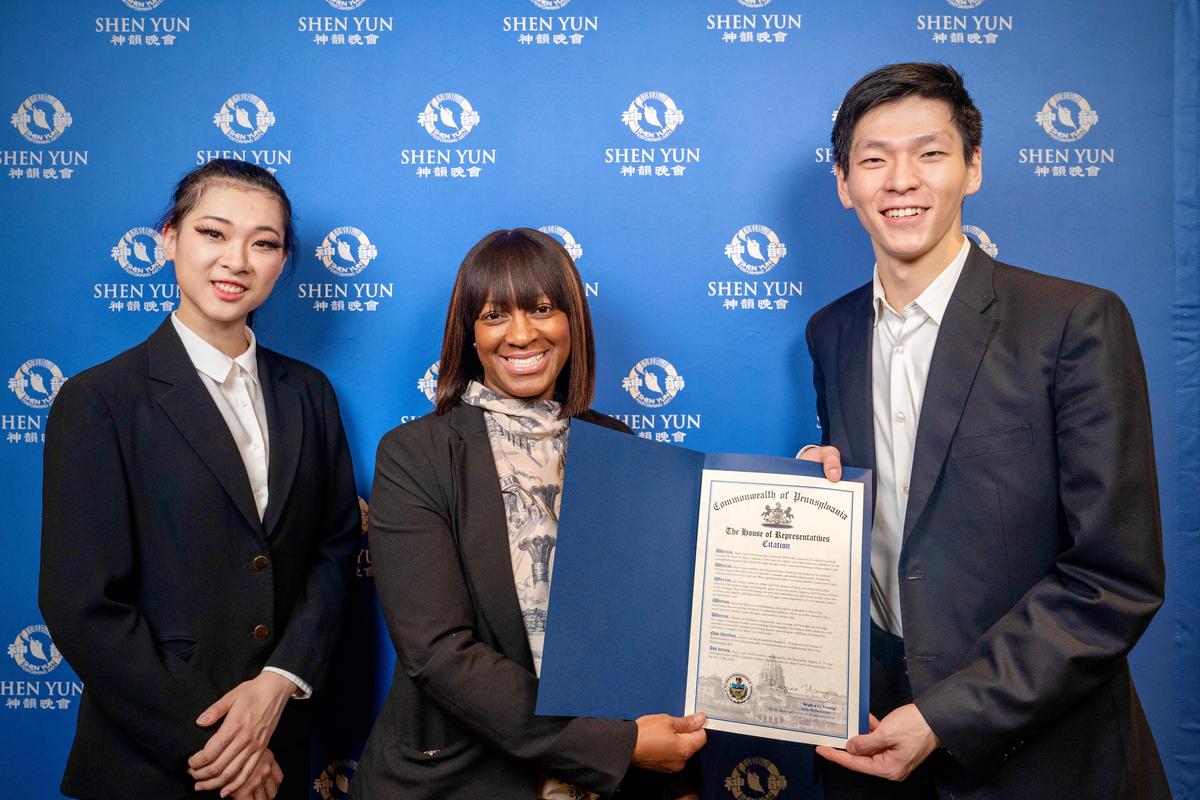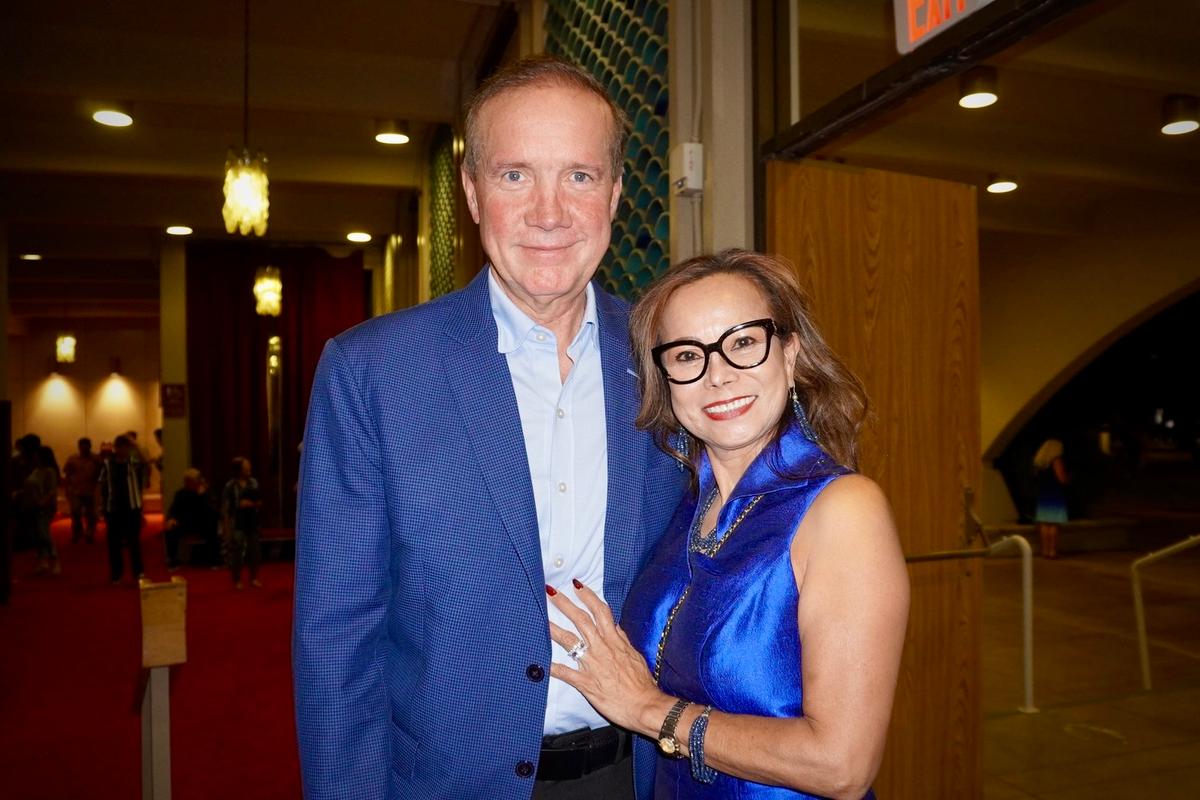CINCINNATI, Ohio—Four attending Shen Yun Performing Arts on Friday, Feb. 2 at Aronoff Center for the Arts were so delighted with the performance that they shared a lively conversation after the show describing their insights and perceptions about what they'd just experienced.
New York-based Shen Yun brings world-class singers, a full orchestra and a company of classical Chinese dancers wherever they tour.
The four friends all have their feet in the arts, whatever their actual profession.
Kelly Hale happens to be a professional in the performance field. He is Professor of Opera and Coaching at the University of Cincinnati’s College-Conservatory of Music and has coached, conducted and or staged nearly 100 opera productions, locally. He has also been active internationally as an organist, conductor, and accompanist, according to the school website.
“Naturally, I enjoyed the singing, the voices are absolutely spectacular, very, very large and well developed,” he said.
Shen Yun’s singers use the bel canto, Italian style of singing, but they sing in Chinese—the backdrop has projected translations—songs honoring virtues and spiritual themes.
“It was wonderful to hear the Chinese. It’s like folk songs that are so expanded they are actually operatic arias, that’s the scope of it, it was really enormous. Thrilling, just thrilling.”
Mr. Hale also commented on the orchestra, which contains both Western instruments and traditional Chinese ones as well.
“The orchestra also gave tremendous support to the entire performance— both the dancing, and the pianist who accompanied the singers was excellent, she was absolutely excellent. I’ve never seen anything like it, and I very, very much enjoyed the entire evening.”
Rebecca Hale teaches English as a Second Language at the University of Cincinnati, but she also teaches tribal belly dancing and has an extensive background in ballet. Her dancing student Tricia Carr joined her.
“I loved it, it was mesmerizing. The colors, the dancers stamina and their training and their technique—it was incredible,” Ms. Hale said of the show.
“I studied dance for a long time, I studied classical ballet for a long time, so I have a little understanding how hard these dancers have to work. It’s miraculous,” she said.
People often comment on the gymnastic aspect of Shen Yun dances. The dancers undergo extensive training to the difficult techniques of turns, flips, and leaps. These compose one part of classical Chinese dance, and, in fact, gymnastics arose from classical Chinese dance.
Commenting on the combination of dance and “gymnastics” onstage, Ms. Carr said that she didn’t think she could achieve the level of performance: “Too hard, too much athleticism, those flips, I don’t think I could do them.”
“The snowflakes, the choreography, the costuming, the spinning and the symbolism of the white fans were like snowflakes and then at the end when the green comes back,” spring is beckoned, Ms. Carr explained.
Ms. Hale mentioned that the dancer’s energy level was phenomenal and “and the choreography was amazing.”
Mike Ballinger, an engineer by day, is also a musician, trained as a pianist and singer.
“I thought the accompanist, she was wonderful, she was one of the best I’ve heard in a long, long time. It’s a trip to accompany people well and easily and it was magic for her, she was amazing. She could tour as a solo act, if she wanted to.”
As for the dancing, he enjoyed “the geometric patterns and the choreography,” which he called wonderful. “I also read a lot of history so I was aware of some the Chinese legends, a little bit, and the folk tales.”
Everyone jumped into the conversation about the digital backdrop that shows projected animated figures that seem to come from heaven and then land on stage to become the dancers onstage. “We were all just commenting how we all liked the digital,” said one. “Very effective,” “spectacular,” “very animated” others chimed in on top of one another. Ms. Hale felt “it was so fun, I love the fun loving spirit and the humor.”
Each also enjoyed deeper aspects of the show. “Bringing the Buddha into the dances, and into the focus, it was done with such grace and such finesse and even the humorous dance about the monks, the joyful monks and how they were misbehaving, I mean it was all done with very great taste,” Mr. Hale said.
“I loved how so many of the characters were saved, they would die and they would come back to life or they were in danger and then they were saved—that’s such a comforting message for everybody. ... something we all need and seeing that so beautifully executed was very comforting,” Ms. Hale said.
Mr. Hale also appreciated that some dances told the story of human rights abuses in China—such that Shen Yun is not allowed to perform in China. “Super, spectacular … I know they cannot do this inside China and the fact that they do this here, and with such abandon and with such honesty, its a great vibration for the world.”
Continuing, he said, “I was very much aware of a cultural difference because [in] some of the lyrics, there was so much story telling and the choreography and the lyrics of the songs tended to be much more philosophical and they didn’t necessarily bring you from point A to point B or point Z, they just put you into a certain space where you have to consider it … we tend to not do that too much in English song or Western music, we tell stories, but they were telling us a … higher consideration.”


